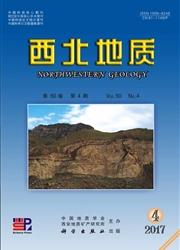

 中文摘要:
中文摘要:
随着地浸技术的引进与不断完善,沉积盆地砂岩型铀矿床已经成为我国铀资源找矿重点。可地浸砂岩型铀矿主要受层间氧化带控制,同时与高背景的铀蚀源区、盆地较弱的新构造运动、沉积和成矿期不同的古气候、有利的岩相岩性、富含有机或无机质还原剂、良好的地下水径流动力条件等密切相关。通过对西北地区典型砂岩型铀矿富集区及其相关盆地成矿地质条件的宏观分析,指出吐哈、伊犁盆地南部和鄂尔多斯盆地周边具有良好的成矿地质条件和找矿潜力,对具有类似于上述盆地的西北地区铀矿找矿前景进行了展望。
 英文摘要:
英文摘要:
As the development of in-situ leaching technique, sandstone-type uranium deposits have become the key prospecting target for uranium resources in China. In-situ leaching applicable sandstone-type uranium deposits are mainly dominated by interlayered oxidation zone. They are also intimately correlated with erosion source area of high uranium setting, weak neo-structural activities, different paleoclimates in sedimentary and mineralization period, favorable lithofacies and lithology, reducers rich in organic or inorganic matter, favorable dynamic condition of underground water runoff. Based on the macroscopical analysis for the enriched areas of typical sandstone-type uranium deposits and relevant mineralization geological conditions in northwest China, this paper points out that there has been the favorable metallogenic geological conditions and in turn prospecting potential in the Turpan-Hami basin, the southern Yili basin and the surroundings of the Ordos basin. Finally, it presents a forecast for the future prospecting on uranium in northwest China where has the similar geological background like the above basins.
 同期刊论文项目
同期刊论文项目
 同项目期刊论文
同项目期刊论文
 期刊信息
期刊信息
